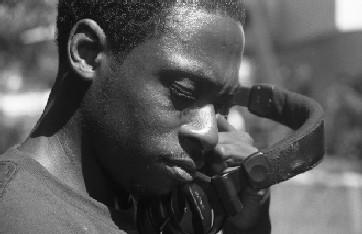
Pete Rock and his engineer, Young Guru, discuss today’s clean sound. via Remixmag
One of Guru’s key techniques for emulating Rock’s brand of ’90s New York street-hop was replicating the sound of the SP-1200 with outboard gear and plug-ins. For tracks like “PJs,” a syrup-thick, bass-driven track featuring Raekwon and Masta Killa, Guru used one of Pro Tools’ factory bit-distorter plug-ins to bring out the crunchy warmth of the RZA-esque track. “You gotta understand, the SP-1200 is a 12-bit sampler that samples at a rate of 22 kHz,” Guru says. “I used those parameters as a reference point and crunched it up like it would’ve sounded going through that machine. I know that machine; nothing’s gonna sound exactly like that machine, but the parameters can be replicated. The track already sounded like an old Wu-Tang joint, so my job was to just finish what Rock started. I reduced the bass line to 12 bits and brought the sample rate down to 22 kHz. I also colored it with some of the API 2500’s harmonic settings.”
When Guru was focusing on the drums, however, he relied primarily on his API/Empirical Labs’ Distressor compression combination. “I never read the manual on the API until recently. When I did, I learned some of the proper preset settings. You can pretty much copy any old compression unit on the API,” Guru says, referring to the unit’s two primary settings: “feed back” for old-style or “feed forward” for newer models. “I ran all the drums through there and really got that snap from the snare. I also copied some of the tape-compression settings to get the feeling of the original recordings that Rock might have sampled from.” In combination with the onboard equalizers and compressors from Manhattan Center’s Neve VR mixing console, which Guru mixed on, “there wasn’t much more to do,” Guru says.



